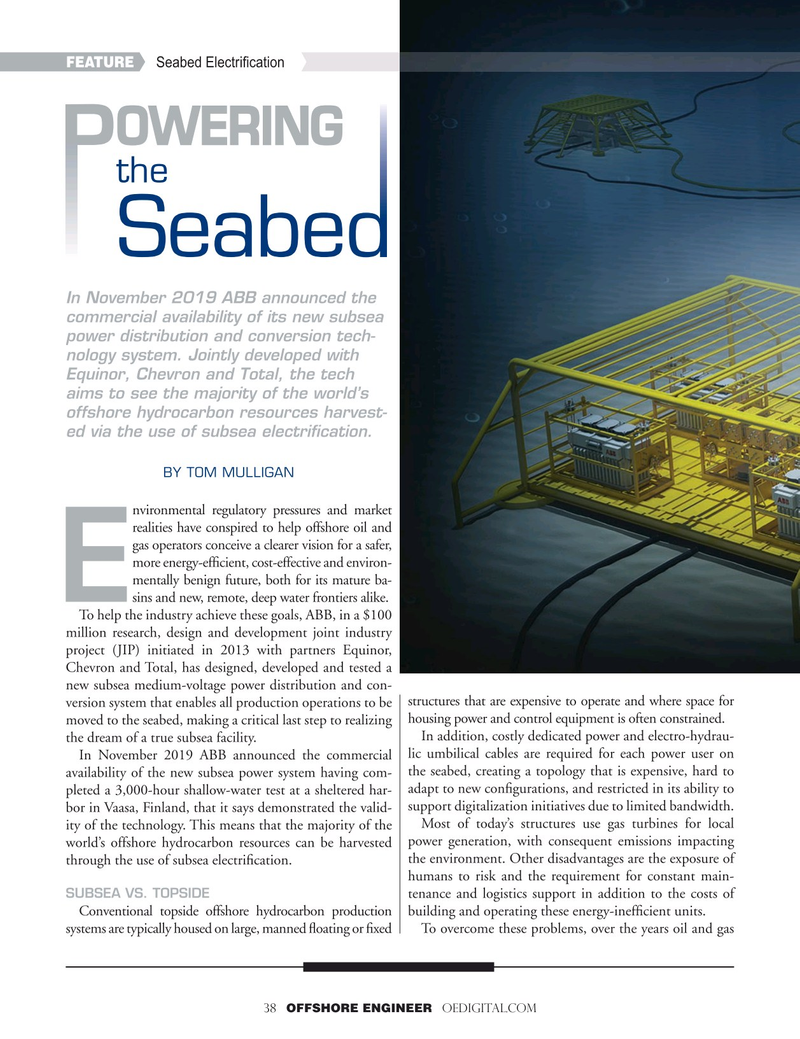
Page 38: of Offshore Engineer Magazine (Jan/Feb 2020)
Read this page in Pdf, Flash or Html5 edition of Jan/Feb 2020 Offshore Engineer Magazine
FEATURE Seabed Electri? cation
OWERING the
Seabe
In November 2019 ABB announced the commercial availability of its new subsea power distribution and conversion tech- nology system. Jointly developed with
Equinor, Chevron and Total, the tech aims to see the majority of the world’s offshore hydrocarbon resources harvest- ed via the use of subsea electrification.
BY TOM MULLIGAN nvironmental regulatory pressures and market realities have conspired to help offshore oil and gas operators conceive a clearer vision for a safer, more energy-ef? cient, cost-effective and environ- mentally benign future, both for its mature ba- sins and new, remote, deep water frontiers alike.
E
To help the industry achieve these goals, ABB, in a $100 million research, design and development joint industry project (JIP) initiated in 2013 with partners Equinor,
Chevron and Total, has designed, developed and tested a new subsea medium-voltage power distribution and con- version system that enables all production operations to be structures that are expensive to operate and where space for moved to the seabed, making a critical last step to realizing housing power and control equipment is often constrained.
In addition, costly dedicated power and electro-hydrau- the dream of a true subsea facility.
In November 2019 ABB announced the commercial lic umbilical cables are required for each power user on the seabed, creating a topology that is expensive, hard to availability of the new subsea power system having com- adapt to new con? gurations, and restricted in its ability to pleted a 3,000-hour shallow-water test at a sheltered har- support digitalization initiatives due to limited bandwidth. bor in Vaasa, Finland, that it says demonstrated the valid-
Most of today’s structures use gas turbines for local ity of the technology. This means that the majority of the world’s offshore hydrocarbon resources can be harvested power generation, with consequent emissions impacting the environment. Other disadvantages are the exposure of through the use of subsea electri? cation.
humans to risk and the requirement for constant main- tenance and logistics support in addition to the costs of
SUBSEA VS. TOPSIDE
Conventional topside offshore hydrocarbon production building and operating these energy-inef? cient units. systems are typically housed on large, manned ? oating or ? xed To overcome these problems, over the years oil and gas 38 OFFSHORE ENGINEER OEDIGITAL.COM

 37
37

 39
39